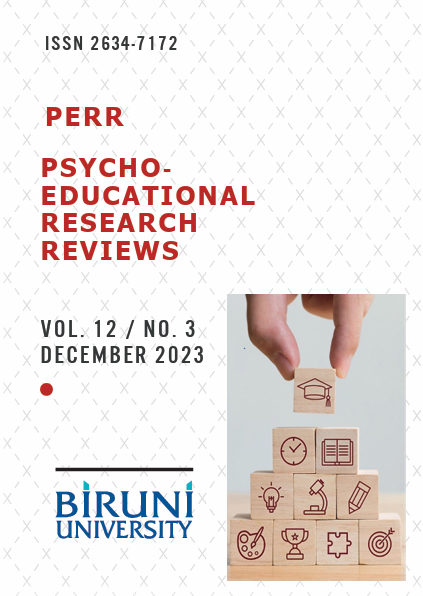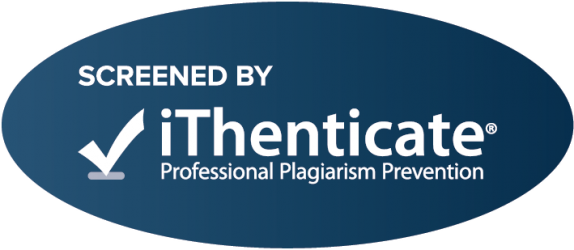Discussing of the Implementation Process for Writing to Learn Activities
DOI:
https://doi.org/10.52963/PERR_Biruni_V12.N3.08Keywords:
Writing to learn activities, The implementation process , Document reviewAbstract
The study aims to discuss of the implementation process for writing to learn activities. The document review method has been used in the research containing qualitative data. Data were obtained from scientific articles, books, and presentations containing information about the general characteristics of process-oriented writing and writing to learn and analyzed using the descriptive analysis method. As a result of the reviews synthesised the findings, guidelines, and applications of the studies based on researchers' observations, experiences, intuitions, and inferences and presented them under five different headings. In this context, the implementation process of writing to learn has been discussed in five stages: preparation, exploration, application, evaluation, and sharing. In line with the stated results, it can be suggested that researchers who will use the WTL method in the future should make applications by considering the relevant steps. Thus, the direct or indirect effects of writing for learning activities on students can be increased.
Downloads
References
Akerson, V., & Young, T. (2005). Science the “write” way. Science and Children, 43(3), 38-41.
Aktepe, Z. T., & Yıldız, A. (2020). An investigation of the effects of writing to learn activities on academic achievement in the fourth grade introduction to matter unit. Journal of Current Researches on Social Sciences, 10(1), 73-88. https://doi.org/10.26579/jocress.348
Alber-Morgen, S. R., Hessler, T., & Konrad, M. (2007). Teaching writing for keep. Education and Treatment of Children, 30(3), 107-128. http://doi.org/10.1353/etc.2007.0012
Alharbi, F. (2015). Writing for learning to ımprove students’ comprehension at the college level. English Language Teaching, 8(5), 222-234.
Arnold, K. M., Umanath, S., Thio, K., Reilly, W. B., McDaniel, M. A., & Marsh, E. J. (2017). Understanding the cognitive processes involved in writing to learn. Journal of Experimental Psychology: Applied, 23(2), 115-127. http://doi.org/10.1037/xap0000119
Baker, W. P., Barstack, R., Clark, D., Hull, E., Goodman, B., Kook, J., Kraft, K., Ramakrishna, P., Roberts, E., Shaw, J. Weaver, D., & Lang, M. (2008). Writing-to-Learn in the İnquiry-Science Classroom: Effective strategies from middle school science and writing teachers, The Clearing House: A Journal of Educational Strategies, Issues and Ideas, 81(3), 105-108. https://doi.org/10.3200/TCHS.81.3.105-108
Balgopal, M., & Wallace, A. (2013). Writing to learn, writing to communicate and scientific literacy. The American Biology Teacher, 75(3), 170-177. https://doi.org/10.1525/abt.2013.75.3.5
Bangert-Drowns, R. L., Hurley, M. M., & Wilkinson, B. (2004). The effects of school-based writing-to-learn ınterventions on academic achievement: A meta-analysis. Review of Educational Research, 74(1), 29-58. https://doi.org/10.3102/00346543074001029
Bogdan, R., & Biklen, S. K. (2007). Qualitative research for education: An introduction to theories and methods (5th ed.). Pearson.
Bozat, Ö., & Yıldız, A. (2015). 5. sınıf yaşamımızdaki elektrik ünitesinde öğrenme amaçlı yazma etkinliklerinden mektubun başarıya etkisi. Education Sciences, 10(4), 291-304. https://10.12739/NWSA.2015.10.4.1C0648
Caukin, N. S. (2010). Science writing heurisitc: A writing-to-learn strategy and its effect on student's science achievement, science self-efficacy, and scientific epistemological view (Thesis No. 3439048) [Doctoral dissertation, Tennessee State University]. ProQuest Dissertations & Theses Global.
Chappell, A. (2006) Using the grieving process and learning journals to evaluate students' responses to problem-based learning in an undergraduate geography curriculum. Journal of Geography in Higher Education, 30(1), 15-31, https://10.1080/03098260500499584
Clary-Lemon, J., Gervacio, R., & Latimer, D. (2019). Writing as a mode of learning: Staged approaches to chromatography and writing in the undergraduate organic lab. Journal of Chemical Education, 96(5), 965-969. https://doi.org/10.1021/acs.jchemed.9b00072
Dalka, R. (2019). Writing-to-Learn physics: Helping students understand energy systems [Doctoral dissertation, The University of Michigan]. ProQuest Dissertations & Theses Global.
Daşdemir, İ., Cengiz, E., & Uzoğlu, M. (2015). Öğrenme amaçlı yazma aktivitelerinden mektup yazmanın 7. sınıf ışık ünitesinde öğrencilerin akademik başarılarına ve bilimsel tutumlarına etkisi. Ordu Üniversitesi Sosyal Bilimler Araştırma Dergisi, 5(11), 89-103.
Dolgin, A. B. (1981). Teach social studies through writing. The Social Studies, 72(1), 8-10.
Emig, J. (1977). Writing as a mode of learning. College Composition and Communitation, 28(2), 122-128.
Fellows, N. J. (1994). A window into thinking: Using student writing to understand conceptual change in science learning. Journal of Research in Science Teaching, 31(9), 985-1001. https://doi.org/10.1002/tea.3660310911
Firek, H. (2006). Creative writing in the social studies classroom: Promoting literacy and content learning. Social Education, 70(4), 183-186.
Fry, S. W., & Villagomez, A. (2012). Writing to learn: Benefits and limitations. College Teaching, 60(4), 170-175. https://doi.org/10.1080/87567555.2012.697081
Gezmiş-Ceyhan, N. (2014). Süreç odaklı yazma yaklaşımının yazma dersindeki yeri ve etkisi. Dil Dergisi, 163, 46-63. https://doi.org/10.1501/Dilder_0000000206
Gibson, W. J., & Brown, A. (2009). Working with qualitative data. Sage.
Goggin, W. F. (1985). Writing to learn: A message for history and social studies teachers. The Social Studies, 76(4),170- 173.
Gupte, T., Watts, F. M., Schmidt McCormack, J. A., Zaimi, I., Gere, A. R., & Shultz, G. V. (2021). Students’ meaningful learning experiences from participating in organic chemistry writing-to-learn activities. Chemistry Education Research and Practice, 22(2), 396-414. https://doi.org/10.1039/d0rp00266f
Günel, M., & Hand, B. (2005). The effects of non-traditional writing and audiences in learning science [Paper presentation]. Paper presented at the National Association for Research in Science Teaching (NARST), USA.
Günel, M., Hand, B., & McDermott, M. A. (2009a). Writing for different audiences: Effects on high-school students' conceptual understanding of biology. Learning and Instruction, 19(4), 354-367. https://doi.org/10.1016/j.learninstruc.2008.07.001
Günel, M., Uzoğlu, M., & Büyükkasap, E. (2009b). Öğrenme amaçlı yazma aktivitelerinin kullanımının ilköğretim seviyesinde kuvvet konusunu öğrenmeye etkisi. Gazi Eğitim Fakültesi Dergisi, 29(1), 379-399.
Hand, B., & Prain, V. (2002). Teachers Implementing writing to learn strategies in junior secondary science: A case study. Science Education, 86(6), 737–755.
Hand, B., Prain, V., & Vance, K. (1999). Writing to learn. Science Scope, 23(2), 21-23.
Harmer, J. (2002). Practice of English language teaching. (4th. ed.). Longman
Hohenshell, L., Hand, B., & Staker, J. (2004). Promoting conceptual understatnding of biotechnology: Writing to a younger audience. American Biology Teacher, 66(5), 333- 338.
Holbrook, H.T. (1987). Writing to learn in the social studies. The Reading Teacher, 41(2), 216-219.
İspir, B., & Yıldız, A. (2021a, 12-14 November). Planlı yazma ile öğrenme amaçlı yazmanın özelliklerinin tartışılması [Oral Presentation]. 19. Uluslararası Sınıf Öğretmenliği Sempozyumu, Türkiye.
İspir, B., & Yıldız, A. (2021b). Türkiye’de öğrenme amaçlı yazma hakkında yapılan araştırmaların analizi: Bir meta-sentez çalışması. OPUS–Uluslararası Toplum Araştırmaları Dergisi, 18(41), 3396-3447. https://doi.org/10.26466/opus.906264
İspir, B. (2021c). Dördüncü sınıf basit elektrik devreleri ünitesinde öğrenme amaçlı yazma ve model tabanlı öğrenme etkinliklerinin başarıya etkisi (Tez No. 678088) [Master’s Thesis, Atatürk University]. Higher Education Council Theses Center.
İspir, B., & Yıldız, A. (2022). The effect of writing for learning and model-based learning activities on success and permanence in the fourth grade simple electrical circuits unit. Kastamonu Education Journal, 30(4), 788-804. https://doi.org/10.24106/kefdergi.1195568
Kayaalp, F., & Şimşek, U. (2021). Sosyal bilgiler öğretiminde öğrenme amaçlı yazma. S. Polat & B. Aksoy (Edt.), Kuramdan uygulamaya sosyal bilgiler öğretiminde çağdaş öğrenme ve öğretme yaklaşımları içinde (pp. 47-73). Pegem Akademi.
Kieft, M., Rijlaarsdam, G., & Bergh, H.B. (2006). Writing as a learning tool: Testing the role of students’ writing strategies. European Journal of Psychology of Education, 11(1), 17-34.
Kim, S., Yang, J. W., Lim, J., Lee, S., Ihm, J., & Park, J. (2021). The impact of writing on academic performance for medical students. BMC Medical Education, 21(1), 1-8. https://doi.org/10.1186/s12909-021-02485-2
Klein, D. P. (1999). Reopening inquiry into cognitive processes in writing-to-learn. Educational Psychology Review, 11(3), 203-270.
Klein, P. D., & Boscolo, P. (2016). Trends in research on writing as a learning activity. Journal of Writing Research, 7(3), 311-350. http://doi.org/10.17239/jowr-2016.07.03.01
Koçak, G., & Seven, S. (2016). Fen bilgisi öğretmen adaylarının öğrenme amaçlı yazma etkinlikleri hakkındaki görüşleri: Tek boyutta hareket örneği. Ekev Akademi Dergisi, 20(65), 253-268.
Mason, L., & Boscolo, P. (2000). Writing and conceptual change: What changes. Instructional Science, 28(3) 199-226.
Maykut, P., & Morehouse, R. (1994). Beginning qualitative research: A philosophical and practical guide. Routledge.
Merriam, S. B. (2013). Nitel araştırma: Desen ve uygulama için bir rehber (S. Turan, Trans. Ed.). Nobel.
Nückles, M., Roelle, J., Glogger-Frey, I., Waldeyer, J., & Renkl, A. (2020). The self-regulation-view in writing-tolearn: Using journal writing to optimize cognitive load in self-regulated learning. Educational Psychology Review, 32(4), 1089-1126. https://doi.org/10.1007/s10648-020-09541-1
Pınar, E., & Yıldız, A. (2020). The effect of journal writing, one of the “writing to learn” activities, on achievement and science attitude in the fourth grade science course. Journal of Current Researches on Social Sciences, 10(1), 179-196.
Poock, J. R., Burke, K. A., Greenbowe, T. J., & Hand, B. M. (2007). Using the science writing heuristic in the general chemistry laboratory to ımprove students’ academic performance. Journal of Chemical Education, 84(8), 1371-1379. https://doi.org/10.1021/ed084p1371
Reaves, R. R., Flowers, J. L., & Jewell, L. R. (1993). Effects of writing-to-learn activities on the content knowledge, retention, and attitudes of secondary vocational agriculture students, Journal of Agricultural Education, 34(3), 34-40. https://doi.org/10.5032/jae.1993.03034
Reilly, E. M. (2007). Writing to learn mathematics: A mixed method study [Doctoral dissertation, Indiana University of Pennsylvania]. ProQuest Dissertations & Theses Global.
Rivard, L. P., & Straw, S. B. (2000). The effect of talk and writing on learning science: An exploratory study. Science Education, 84(5), 566-593.
Smith, C. B. (1999). Improving your child’s writing skills. Family Learning Association.
Sönmez, V., & Alacapınar, F. G. (2018). Örneklendirilmiş bilimsel araştırma yöntemleri (6th ed.). Anı.
Tynjälä, P. (1998). Writing as a tool for constructive learninig: students’ learning experiences during an experiment. Higher Education, 36, 209-230.
Uzoğlu, M., & Gürbüz, F. (2013). Fen ve teknoloji öğretmen adaylarının ısı ve sıcaklık konusundaki kavram yanılgılarının belirlenmesinde öğrenme amaçlı mektup yazma aktivitesinin kullanılması. International Journal of Social Science, 6(4), 501-517.
Uzun, S., & Alev, N. (2013). Öğrenme amaçlı okuma-yazma etkinlikleri ile zenginleştirilmiş ortamların öğrenci başarısına etkisi. Türk Fen Eğitimi Dergisi, 10(2), 138-154.
Walker, B., Shippen, M. E., Alberto, P., Houchins, D. E., & Cihak, D. F. (2005). Using the expressive writing program to improve the writing skills of high school students with learning disabilities. Learning Disabilities Research & Practice, 20(3), 175-183. http://doi.org/10.1111/j.1540-5826.2005.00131.x
Widodo, H. P. (2008). Process-based academic essay writing instruction in an EFL context. Bahasa Dan Seni, 36(1), 101-111.
Wright, K. L., Hodges, T. S., Zimmer, W. K., & McTigue, E. M. (2019). Writing-to-learn in secondary science classes: For whom is it effective. Reading & Writing Quarterly, 35(4), 289-304. https://doi.org/10.1080/10573569.2018.1541769
Yıldırım, A., & Şimşek, H. (2018). Sosyal bilimlerde nitel araştırma yöntemleri (11th ed.). Seçkin.
Yıldız, A. (2012a). Letter as a writing to learn activity and the addressee. Mevlana International Journal of Education, 2(2), 1-10.
Yıldız, A. (2012b). Prospective teachers' comprehension levels of special relativity theory and the effect of writing for learning on achievement. Australian Journal of Teacher Education, 37(12), 15-28.
Yıldız, A. (2014). Öğrenme amaçlı yazma aktivitesi olarak mektup ve etkili kullanımı. Turkish Studies, 9(5), 2097-2104. http://doi.org/10.7827/TurkishStudies.6979
Yıldız, A. (2016). İlkokulda öğrenme amaçlı yazma etkinliklerinin akademik başarıya etkisinin tartışılması. Turkish Studies, 11(14), 861-870. http://doi.org/10.7827/TurkishStudies.9665
Yıldız, A., & Büyükkasap, E. (2011). Öğretmen adaylarının fotoelektrik olayını anlama düzeyleri ve öğrenme amaçlı yazmanın başarıya etkisi. Kuram ve Uygulamada Eğitim Bilimleri, 11(4), 2259- 2274.
Additional Files
Published
How to Cite
Issue
Section
License
Copyright (c) 2023 Psycho-Educational Research Reviews

This work is licensed under a Creative Commons Attribution-NonCommercial-NoDerivatives 4.0 International License.










